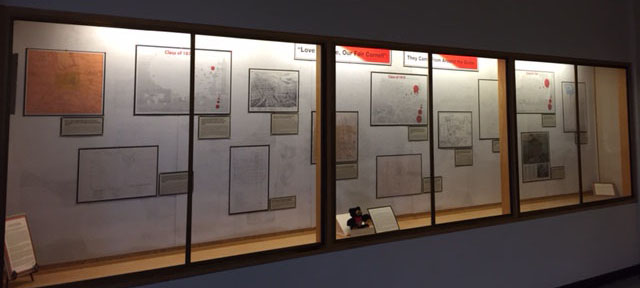The exhibition is on display from April to December 2015 in the Olin Library Lower Level display case, Cornell University.

In his address at the opening of the University on October 7, 1868, Ezra Cornell famously said: “I trust we have laid the foundation of a University — ‘an institution where any person can find instruction in any study.’”
The principle of the democracy of education, the breadth and diversity of the curriculum – the equal recognition of classical and modern literature, course offerings from modern history and political science to applied mechanics and horticulture to Greek and Latin – was almost unknown at the time Cornell was founded. At Princeton, for instance, there was no option of studies until the senior year when mathematics could be substituted for Greek. Thus, many older and more independent students looking for a college were drawn to Cornell, as were poor young people hoping to support themselves by the opportunities for work offered by the young college. The first students came from all parts of the United States and the rest of the world. The founders’ belief in coeducation and the opening of Sage College in 1872 attracted a number of young women (37 enrolled in 1874.)
The cosmopolitan character of Cornell, evident from the very beginning, was strengthened with the years. For instance, the first Japanese student graduated in 1876. By the turn of the 20th century, thirty four Japanese students were enrolled, a number that continued grow both from that country as well as from other parts of Asia, Europe, and South America.
In their book, “Cornell: A History, 1940-2015,” Professors Altschuler and Kramnick argue that the latter history of the university is in large part a set of variations on the narrative of freedom, the removal of restriction and regulation, the obligation to others and to one’s self to do what is right and useful, with a principled commitment to the Cornell community “and to the world outside the Eddy Street gate.” This, in my opinion, is what still keeps it attractive to young people from around the globe.
The exhibition attempts to show the world-wide appeal of Cornell University from its founding to the present through three original maps following the birthplaces of students from the first full class (1872), and the 50th and centennial classes. Maps from the Library’s Map Collection show the physical changes of the Cornell campus at these same points in time.